Introduction To Tennis Training
It takes dedication to improve your tennis game. It takes lots of practice and instruction from coaches who know what they are talking about. But it takes more than hitting thousands of tennis balls to really take your game to the next level. There is a lot of literature out there on improving your tennis game, but not much on what it takes off the court. This can be just as important as the work you put in on the court.
The best tennis players in the world live a very balanced, healthy life. Everything they do works in harmony to give them the best possible chance to succeed on the court. Every choice they make is centered around their game. What they eat, how much they sleep, how/when they work out, and so much more.
We are not suggesting that you need to become as obsessed as a top tennis player, but you can certainly learn from them. Whether your goal is to earn a college tennis scholarship, move up a USTA Division, or simply improve your game to be more competitive in your weekly doubles game, your off-court training is much more important than you think.
We have outlined the most important areas for your off-court training so that you can take your on-court game to the next level.
- Diet: What Do Tennis Players Like To Eat?
- Tennis Fitness: How Do Tennis Players Stay Fit?
- Tennis Gear: What Gear Do I need For Tennis
- Tennis Etiquette: Basic Rules Of Tennis And Tennis Etiquette

Diet: What Do Tennis Players Like To Eat?
It’s undeniable that your tennis training is the most important part of improving your game. However, how your fuel your body to perform at its highest potential on-court is hugely important as well. As the saying goes, “You wouldn’t put regular gasoline in your Ferrari. Why would you fuel your body with less than the best foods?”
Here are some simple diet tips to get your body in tip-top tennis shape.
- Don’t skip breakfast! Whatever the excuse, too many people skip breakfast. Especially if you are serious about improving your athletic performance. Scientifically speaking, your blood sugar is already low when you wake up. Try and eat something carb-heavy to start the day, like a half of a bagel or toast. This way, you will have some fuel well before you head out the door. If you are not used to eating in the morning start small, like a glass of apple juice, or a few bites of yogurt. You’ll be amazed at how much more ready your body is for exercise, just with a little breakfast!
- Hydrate, Hydrate, Hydrate! Hydrating before a match is great. Hydrating during one is critical. Hydrating post-workout is mandatory. But if you are thinking about hydration like that… you’re doing it wrong! Hydrate ALL the time. If you can get in the habit of drinking water all throughout the day, you won’t need to think about hydrating for a match, you will already be hydrated. You’ll be more prepared, feel better, and play better as a result.
- Boost your immune system. Eating healthy strengthens your body, but also your immune system. Eat more antioxidants and superfoods! The more colorful your plate (with veggies) the better. Incorporate walnuts, fruit or flax on top of veggies for an added boost. Keep Greek yogurt in the fridge as it is loaded with probiotics, and don’t forget to take a multivitamin!
- Plan Ahead! Do you find yourself going to the grocery store every day, or every other day? Not only are you likely wasting money, but you are making it much more difficult to stick to a healthy diet. Try to plan your meals for the week on Sunday. You’ll find it’s much easier to stick to a healthy meal-plan, in addition to saving you time and money!
- Snack healthy. Keep a individual size blender around for smoothies when you are having a snack craving. Nuts and trail mix are great healthy snacks too!
- Don’t Diet! Stick to your diet plan—don’t “Diet!” Reducing your caloric intake, or cutting out certain foods in order to be lean or lose weight is not the healthy approach. This will reduce your stores of carbohydrates which will decrease athletic performance as well as aid in muscle breakdown.
- Recover correctly. Proper recovery is not reserved for just elite athletes. In fact, every athlete should learn from them. Immediately after any high-intensity workout (and no longer than thirty minutes after) you should be consuming something loaded with a mixture of protein and carbs. Whey protein shakes are one of the easiest ways to get great recovery easily and cheaply. Within an hour of finishing your workout, try to eat a sandwich or salad with lean meats or egg. Avoid processed carbs which increase inflammation, and opt for anti-inflammatory foods like fruits and nuts. Your body will feel better, and be more ready for your next workout or match!
Example diet of an Olympic cyclist on an average training day:
- Breakfast: Muesli or Oats with bananas and milk.
- Training: Eating 30-60g of carbs per hour, plus drinking one bottle of water or electrolyte drink per hour.
- Post-training: Carb-filled meal with some protein, such as brown rice with tuna, or a whole-grain sandwich with lean meat and lettuce, tomato, etc.
- Snacks: Fresh fruit, fresh vegetable juice, nuts. Dinner: Lean red meat, chicken, or fish, with lots of vegetables or salad, and some brown rice or quinoa.
Tennis Fitness: How Do Tennis Players Stay Fit?
Tennis training goes far beyond what happens on the court. If you’re serious about tennis training you’ll need to focus on other areas of fitness besides your footwork and swing to make sure you are preparing your body to advance in every way possible. Here is what it takes to stay fit as a tennis player:
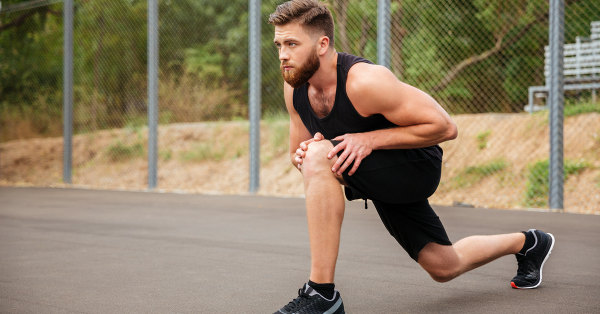
Flexibility For Tennis Players
You know flexibility is important for all athletes, and tennis is no exception! You'll improve at a faster rate and you'll decrease your risk of injury if you are doing regular stretching before and after playing tennis or taking a tennis lesson.
Most people don't realize there is a difference between static and dynamic stretches. Static stretches are ones where you are standing still and lengthening your muscles, whereas dynamic stretches stretch your body as you move it. Dynamic stretches are especially important for sports like tennis, where you are moving and jumping and experiencing a high impact on many of your major muscle groups. To get your muscles truly warmed up for tennis, you need to practice dynamic stretches before you play.
Dynamic Stretch Routine For Tennis Players:
- Start with a short jog around the tennis court, just four laps to get the body moving.
- Standing in place kick your butt with your heels, alternating and lightly jogging if you would like to.
- Plant one foot, take a large step to the side with the other foot and sink into a quarter lunge. Repeat on the other side.
- Start at one baseline and high skip across the court to the other, being sure to bring your knees as high as they can go as you jump.
- Start at one baseline and move across the court doing lunges. Take your time and be sure to sink your back leg as far as it can comfortably go.
- Hold your racket by the top in one hand and the bottom in the other and swing your torso to the left and right as far as it can go, repeating the movement for thirty seconds.
- Wiggle your arms and legs in place for thirty seconds as though you were made of jelly. You can laugh during this one for an extra ab warm up.
Weight Training For Tennis Players
Tennis is an excellent form of exercise because you barely notice you are working your butt off while playing since it's so much fun. However, you should really try to work in weight training to your weekly fitness routine as well, on the days when you can't get in a tennis lesson or match. Why? When you only exercise in one way (playing tennis) you only work a specific muscle group. But to really advance, you need to build all the muscles in your body together. That's why twice a week hit the gym and do all or part of the following regime:
Here’s What We Do
Shoulders
- Shoulder presses
- Lateral raises
Rotator Cuff
- Horizontal External Rotations
- External Rotations While Lying On Side
- Internal Rotations Elbow
- Bicep Curls
- Tricep Extension
Wrist
- Wrist Curls
- Wrist Extensions
- Grips
Core
- Crunches
- Superman exercises
- Standing Russian Twists
Lower Body
- Squats
- Leg Press
- Knee Extensions
- Hamstring Curls
Plyometrics
- High knee jumps
- Side jumps
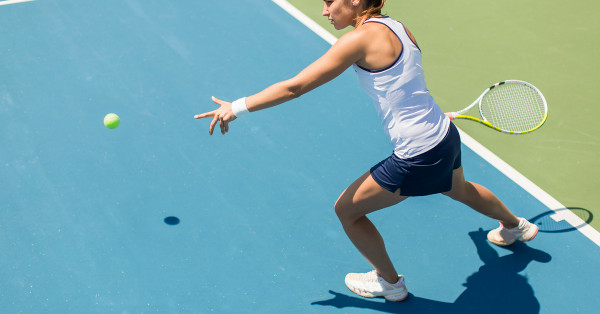
Agility For Tennis Players
Strength is good, but you also need speed, coordination, and reaction time to truly advance as a tennis player. No matter how many tennis lessons you take, if you aren't working on your agility on your off days you are going to find it difficult to improve. The following is a set of core agility movements all tennis players should learn to love!
- Hop Scotch: Lay a tennis ladder flat along side one baseline of the court. Start at the bottom of the ladder (which should be laid flat on the floor). Jump into the first box with your left foot, the second box with both feet, and the third box with your right foot. Repeat to the top of the ladder. Advanced drill: Hop scotch the ladder while tossing a tennis ball in your left hand for one round, your right hand for a second round, and tossing it back and forth between your two hands for a third round.
- In Out Drill: Start at the bottom of the ladder and step into the first box with the left and then immediately right foot. Step just outside the second box with the left and then immediately right foot. Step into the third box with the left and then immediately right foot. Repeat until the top of the ladder.
- T Drill: The player starts out sitting cross legged at the center line halfway between the net and service lines. The coach should be on the other side of the net. When they blow the whistle the player should quickly shuffle sideways to the right doubles sideline and then then to the center before the coach serves the ball there for a volley. Right after sending the volley the player shuffles sideways to the left doubles sideline and back to the center to return another volley. Repeat!
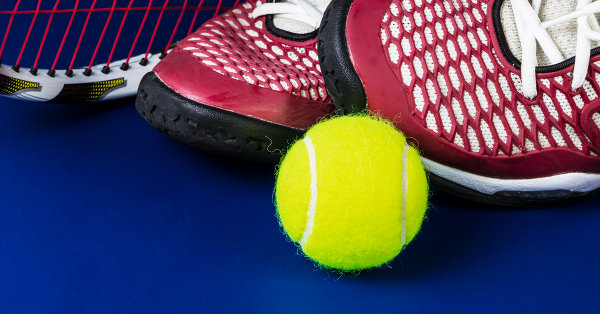
Tennis Gear: What Gear Do I need For Tennis
Everybody likes having new gear for whatever they are doing. Whether hiking, skiing, playing basketball or tennis, new gear is the best! It feels great, and admit it or not, you like showing off new gear. However, tennis is one of the sports where gear is about so much more than being cool. Having the correct tennis racket for your game can mean the difference between playing well and injuring yourself. Same goes with tennis shoes.
As far as apparel and accessories go: they are kind of about being cool, and that’s just fine! If you’re gonna play, you might as well look good doing it!
Tennis Rackets: Which Tennis Racket Should I Use
“What kind of tennis racket should I buy?” is the age-old question that every tennis pro has been asked thousands of times. The answer is complex, because picking the right racket for you is complex. Tennis rackets all come in essentially the same shapes, but the differences really stop there. There are many technical differences between rackets, so the best bet is to work with a certified tennis teaching professional to make sure you get the best racket for you. With that said, there are three different categories of tennis rackets. Generally speaking, knowing your own abilities you should be able to put yourself into one of these categories and be able to find a racket that is likely to fit your game, if not perfectly, certainly safely and in a way that will make the game more enjoyable.
Game Improvement or Power Rackets
Who It’s For: Power or game improvement rackets are designed for players with shorter, slower swings who want more power from their racket.
Features: Power rackets are the largest rackets on the market, usually classified as oversize or superoversize. The frames are very light, and are designated as “head-heavy.” That means that if you were to balance the racket on your finger in the throat, the head of the racket would point straight towards the ground. Having the weight in the head of the racket makes it easier to swing. The light overall weight, coupled with the weight being in the oversized head makes for an enormous sweet spot that is powerful and very forgiving.
Tweener Rackets
Who It’s For: Tweener rackets are models that have a blend of features from game improvement and players rackets. These are designed for the intermediate/advanced player looking for a blend of power and control. These rackets offer low/medium or medium/high power and are primarily designed for intermediate-advanced players looking for more maneuverability with forgiveness.
Features: These rackets are a more “standard” size and shape. The head size is typically around 100 square inches, and the length is average-extended, in the 27.5-28 inch range. These rackets are still on the lighter side, between 9-11 ounces, making them quick and powerful, but possessing more control than the game-improvement rackets.
Control or Player’s Rackets
Who It’s For: Player’s rackets are designed for advanced players with long, fast swings who need control out of their racket instead of power. These tennis rackets are unforgiving, and on the heavy side. Designed for advanced-competitive tournament players, these rackets provide fantastic control and “feel” for players who generate their own power and consistently hit the ball in the middle of the strings regardless of the shot or situation.
Features: Player’s rackets are small and heavy. The head size is typically between 85-98 square inches and they are typically a minimum weight of 11.5 ounces, sometimes weighing over 13 ounces. The frames are thinner and they are always balanced head-light, meaning the weight of the racket is in the handle. There’s a reason these rackets are used by professionals, college players and high-level club players: you need to be very fit and strong to use them!
Selecting the correct tennis racket can make all the difference in the world. You want your tennis equipment to work for you, so take your time during the process of picking your new racket. If possible, work with a certified tennis coach to select the right racket for you. If you can’t work with a coach, be sure to demo as many rackets as possible to really select the right racket for your game, and your body.
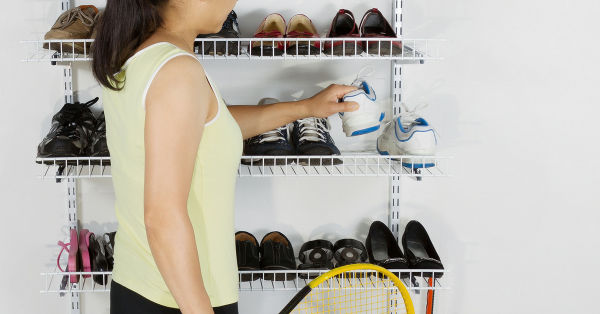
Tennis Footwear: What Tennis Shoes Do I Need For Tennis
“Tennis shoes” is a term used all over America for a generic sneaker. Be sure not to confuse “tennis shoes” with proper tennis shoes. Just like a football cleat is critical for a football player, a great pair of specific tennis shoes are imperative for any tennis player.
Features
Sturdy/stable: Tennis is characterized by stops and starts and quick changes of direction. For this reason tennis shoes are very stable, with serious cushioning, especially in the heels, to withstand the intense smacking of feet on the court.
Flat: Other athletic shoes have a curve from heel-toe for straight line speed, but this isn’t necessary (or safe) for tennis shoes. Tennis shoes are flat for lateral agility and grip.
Non-Marking: Unlike running shoes that have knobby tread and black soles, tennis shoes are designed to not leave marks on the court. Ever seen black streaks all over a hard court? Chances are someone played in running shoes. The quick change of direction in running shoes is not only unsafe, but it’s also bad for the court. Tennis shoes will never mark up the court.
Playing Styles/Court Surfaces: Do you play a baseline game or an aggressive serve and volley game? Do you play primarily on hard courts or on clay or grass? If you play a lot of tennis, or on one particular surface, you will want to buy a pair of shoes specifically suited to that.
Hard Courts: - Hard courts are the most physically punishing both on your body and shoes. Hard court specific shoes have more shock absorption material and are the heaviest-duty shoes on the market. They tend to have reinforced toe-boxes to prevent the hard gritty surface from ripping holes in the shoes. The tread is always non-marking and perfectly flat.
Clay/Grass Court shoes: These shoes have a very different makeup than hard court shoes. Since the surfaces are much softer/more forgiving on the body, the shoes are lighter and designed not to damage the court. They have more tread than a hard court shoe. Grass court shoes are designed to be as grippy as possibly on damp grass. Clay court shoes are designed to have great traction while still allowing sliding, and not getting clay stuck in between the treads.
All Court Shoes: All court shoes are designed to be a blend of every type of tennis shoe, and it’s the shoe that 90% of players should be wearing. These shoes won’t mark up hard courts while still providing traction on the softer surfaces. These shoes are durable and typically come with at least a 6-month outsole guarantee.
Tennis Apparel: What Should I Wear To Play Tennis
Once you have purchased the perfect tennis racket and shoes for your body and game, you are ready to hit the courts. At most tennis facilities, there is no dress code, so you can wear your favorite old pair of shorts from college and a ratty tee shirt if you want to. But don’t you want to look good? Through history tennis was regarded as a stuffy sport. Players wore long pants initially, or dresses for women. It evolved into shorts and skirts, but always all-white. Now tennis apparel has become an expression of any players’ individual style.
Andre Agassi turned tennis style on its head, and now is an enormous industry. Lead by Nike with lines for their top athletes Roger Federer, Rafa Nadal, Serena Williams and Maria Sharapova, tennis apparel is now bright, comfortable, and exceedingly expensive.
Tech fabrics now breathe better and dry faster than ever before, so if you are clinging to your old cotton workout shirts, it just may be time to upgrade. It will keep you cooler, and just may make you play a little better, too!
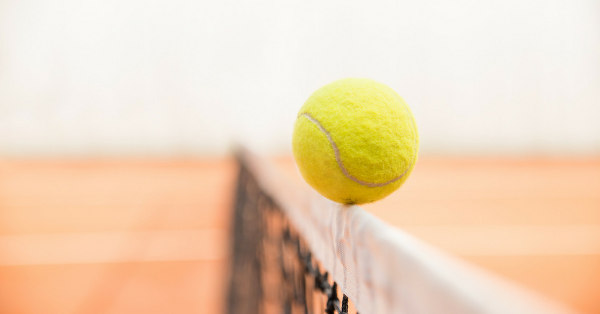
Tennis Etiquette: Basic Rules Of Tennis And Tennis Etiquette
While tennis has evolved over the years and shed much of its stuffy reputation, tennis still abides by rules of etiquette that make it very unique from other sports. It has long been referred to as a “gentleman’s game.” From attire to line-calling, scorekeeping to proper fan behavior, tennis fans and players alike are expected to handle themselves in a certain (proper) manner. Below is everything you need to know to be respected by anyone in the tennis community. Respect is cool.
Line-Calling
Call your own lines: Chances are you aren’t a professional tennis player. That means that not only are you not paid to play tennis, but you are forced to call your own lines. This is the part of tennis that gives it a reputation for being a sport of integrity. You are responsible for calling balls in and out that your opponent hits, meaning the potential is always there to make an incorrect call to benefit yourself. But that goes against everything that is tennis. Unsure means IN: The benefit of the doubt always goes to your opponent, not to you. By following these guidelines, you will ultimately benefit more than you will be hurt. Basically, what this means is if you are unsure of whether or not a ball was in or out, you call the ball in every time. It’s the right thing to do. More than that, by deliberately calling a ball out that was in, commonly referred to as “hooking” your opponent, can cause you more long-term harm than short term benefit. It is very common in amateur tennis to let guilt sink in, and cause you to miss easy shots moving forward knowing that you cheated your opponent.
Lets
A “let” is when the point is interrupted for any reason and is deemed dead as soon as it is called. After it is called the point does not count and is replayed with a first serve for the server. It is most commonly (and always) called when a serve clips the net and falls into the box. In that situation the point is replayed starting with whatever serve was hit when the let happened. In all other instances, the point is replayed starting with a first serve.
A “let” can be called for almost any reason. When a let is called, the point is stopped immediately, and is to be replayed. However, it is expected that a let is to be called only for legitimate reason, and never for a player’s benefit. If a distraction is the fault of a player, that player cannot call a let.
Examples of when a let can be fairly called:
- If a ball from an adjacent court rolls into your court
- If your opponents hat falls off and distracts you
- In doubles if your non-serving opponent is not ready to play and the server is unaware
- If an empty can of balls is rolling around near the bench
Examples of when you cannot call a let:
- If your hat blows off during a point
- If you slip and fall during a point -when a ball falls out of your pocket
- When you are playing Division 1 college tennis and a serve clips the net and falls into the service box
- In D1 college tennis, the play out points where a service let occurs, which doesn’t happen in any other level of tennis
